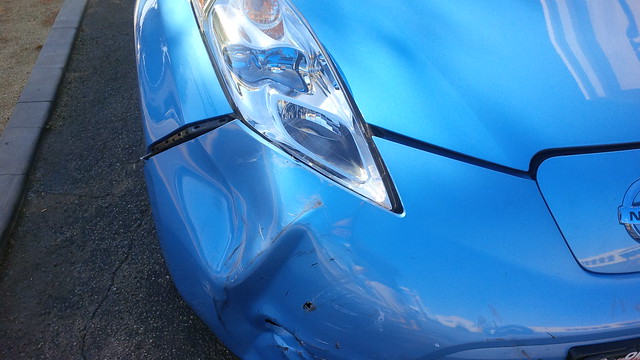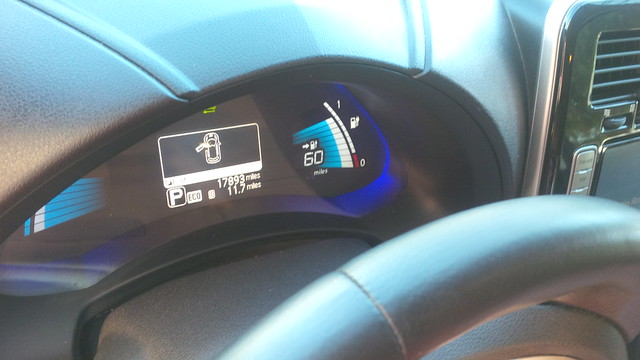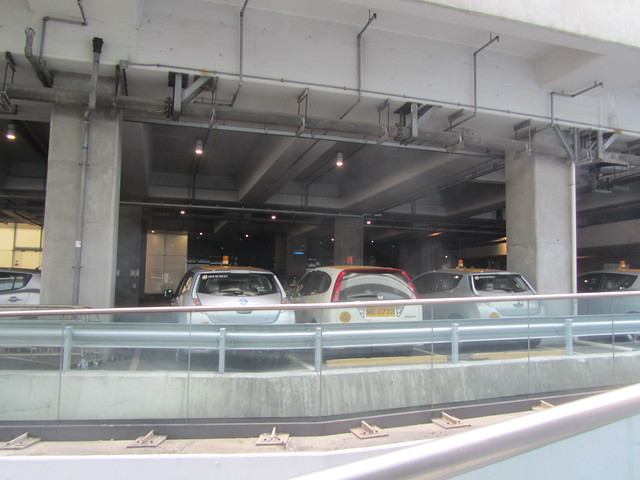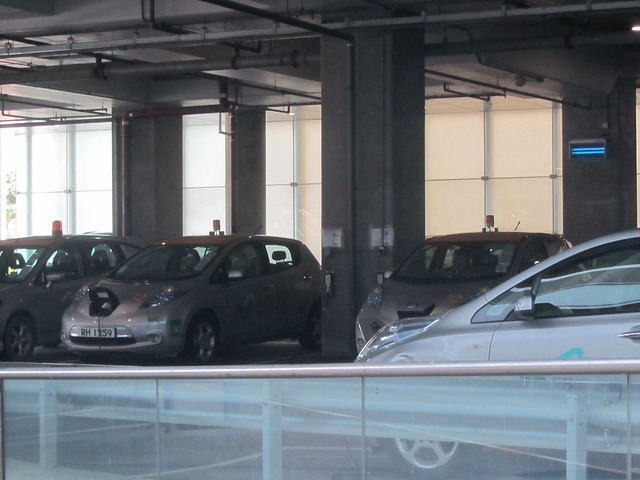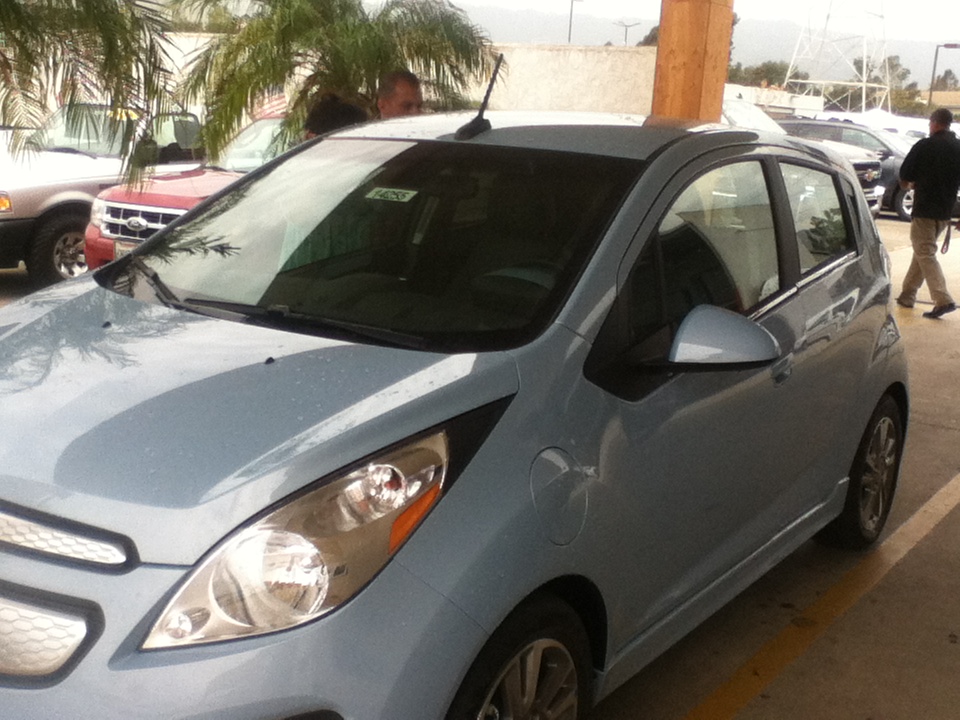After over twenty months of driving electric vehicles (EVs). I was thinking of advantages that EVs have over internal combustion engine (ICE) cars.
One of the things that I feel is critical to have in a production Electric Vehicle is proper telematics. Telematics is the intersection of telecommunications and information. The ability to monitor and get feedback as to the status of the vehicle is a feature that I think should be supported by all EVs.
What are some baseline features of Telematics that I would like to see from EV manufacturers.
1) Support for Multiple Mobile devices as well as the Web.
2) Near real-time status updates of the vehicle and its current state.
A) Battery Charge Level
B) Charging/Not Charging (Plugged/Not Plugged)
C) Estimate of how long charging will take
3) At least several years of access to the systems should be included with the price of the car.
Granted, this post is occurring before we’ve picked up our Tesla Model S, so I’ll have to provide an update with that one later.
As many of you know, I recently installed the Open Vehicle Monitoring System on my wife’s Roadster. So, I can now compare BMW’s My Remote with the OVMS system on a Tesla Roadster 1.5. Additionally, I have been experienced with the Nissan Leaf Carwings system as a function of being “tech support” for my 60+ mother in her 2013 Ocean Blue Nissan Leaf SV (OB-8).
First, I will be using the iOS version running on an iPod Touch and/or iPad, unless I specify otherwise.
So, how do they compare?


First, the My BMW Remote Application and Active E.
1) BMW has an application for iOS and Android. No access via the web or Blackberry.
2) Near real-time status updates of the vehicle and its current state.
the My BMW Remote provides good feedback of this status on the iPod Touch version by giving the user the “Status from: Date and Time” on the upper right of the application. The iPad version only gives the “Status from: Date” on the same location. It makes the iPod Touch version an edge even between the same mobile OS.
As above, the iPod version

and the iPad version [NOTE: I edited out the map on the left corner for the location]

A) Battery Charge Level
BMW does provide this, but it’s been somewhat unreliable. For example, most recently, I was unable to get any of this status on the iOS application from October 23, 2013 to October 29, 2013. It finally started working again.
if the status is frozen, have to hit the refresh button to get a refresh. And it’s hit or miss whether that works.
B) Charging/Not Charging (Plugged/Not Plugged)
The My BMW Remote does show this status and enable one to change the scheduled time of charge as well as initiate a charge directly. It also monitors whether or not the car is plugged in at the location.
C) Estimate of how long charging will take
The My BMW Remote does a good job of providing this feedback in the same manner as the vehicle does as far as when it expects to complete the charge to 100%. It Actually provides the hour:minute estimate of how much time is left to complete the charge. However, this algorithm is actually toward 99% charge and not full stop as the slow down for the last few minutes can last a while if the user wants to unplug when the car is completely stopped its charge.
3) At least several years of access to the systems should be included with the price of the car.
This is not an issue on the Active E as the close end lease from BMW will run out before access to these systems are in place.
OTHER FEATURES AND OBSERVATIONS.
The My BMW Remote App requires the end user to enter a PIN code every time the application is launched. This can be annoying, but the more paranoid would enjoy the security of such a feature.
Additionally, the vehicle’s GPS coordinates will be provided ONLY if the vehicle and the mobile device are “close” to each other (

Older versions of the application allowed the end user to unlock the vehicle, this has since been removed. [added 2013-11-07 The feature still shows up but directs users to CALL BMW Assist]
The end user can start preconditioning of the vehicle remotely, once again the challenge is the actual connection between App and vehicle can be unreliable. [added 2013-11-07 The end user can also SCHEDULE the preconditioning and charging behavior through the App, but it is somewhat unreliable, I personally set these before I leave the vehicle which is why I had an oversight.]

It’s nice that the Application tells the end user the battery temperature, the outside temperature, and the inside temperature of the vehicle. In SoCal, this is used to COOL the cabin down before picking up the car, I’m sure in other parts of the country it is used to HEAT the cabin before getting to the car.

[added 2013-11-07 The user can also link their vehicle to their Google account and send Map destinations to the vehicle via the registered email address of the car. I believe this is a capability of newer BMWs, not just Active Es. I use this feature sporadically, as the others which is why I had the oversight. The Address is received by the vehicle as a “Service Message”]
Lastly, the end user has the option of loading the office and home locations and the application automatically computes whether the end user has enough range to get to either location with the SOC of the vehicle.

Second, the OVMS Application and the Tesla Roadster
The Open Vehicle Monitoring System was launched approximately two years ago (November 2011) and constant improvements have been occuring. In fact, there is a thread on Teslamotorsclub.com that discusses the Technical improvements to OVMS.
I recently chronicled my install of OVMS on the blog.
I installed the formerly current release I believe it was 2.3.2 (prior to the release of 2.5.5 on October 28, 2013) of OVMS firmware in our Roadster 1.5. The behavior and features available to each instance of OVMS is constrained by the vehicle that you connect it to and the firmware release of OVMS.
More information on OVMS can be found on openvehicles.com.
1) Support for Multiple Mobile devices as well as the Web.
OVMS has Apps for iOS and Android. Additionally, it can be configured, controlled, and monitored using SMS.
2) Near real-time status updates of the vehicle and its current state.

OVMS tells you on the upper right hand the status of the data. Live means within a minute of looking at the app. The product updates to a server graciously donated by the teslamotorsclub.com for folks to host their OVMS status. When the antenna is green and lit up, it’s good.
A) Battery Charge Level
B) Charging/Not Charging (Plugged/Not Plugged)
C) Estimate of how long charging will take
OVMS does a great job on A) and B) but C) is constrained. This is probably a vehicle by vehicle challenge as I don’t remember seeing whether our Roadster tells us how long it will take to charge to “full” (i.e. based on the mode that you have the Roadster set to (Storage, Standard, Range, or Performance).)
3) At least several years of access to the systems should be included with the price of the car.
Nothing is free on OVMS except for the development effort (which one should really support AFTER purchasing the necessary pieces, etc.) Give what you can to the guys. They really made the Roadster a more modern EV with the Telematics that was added.
I’m still discovering what we can do with it and I do enjoy the difference in the interface between the iPod and iPad. In the iPod, the screens are paged to three different pages. On the iPad, it uses the whole screen.
iPod screens –



and on the iPad
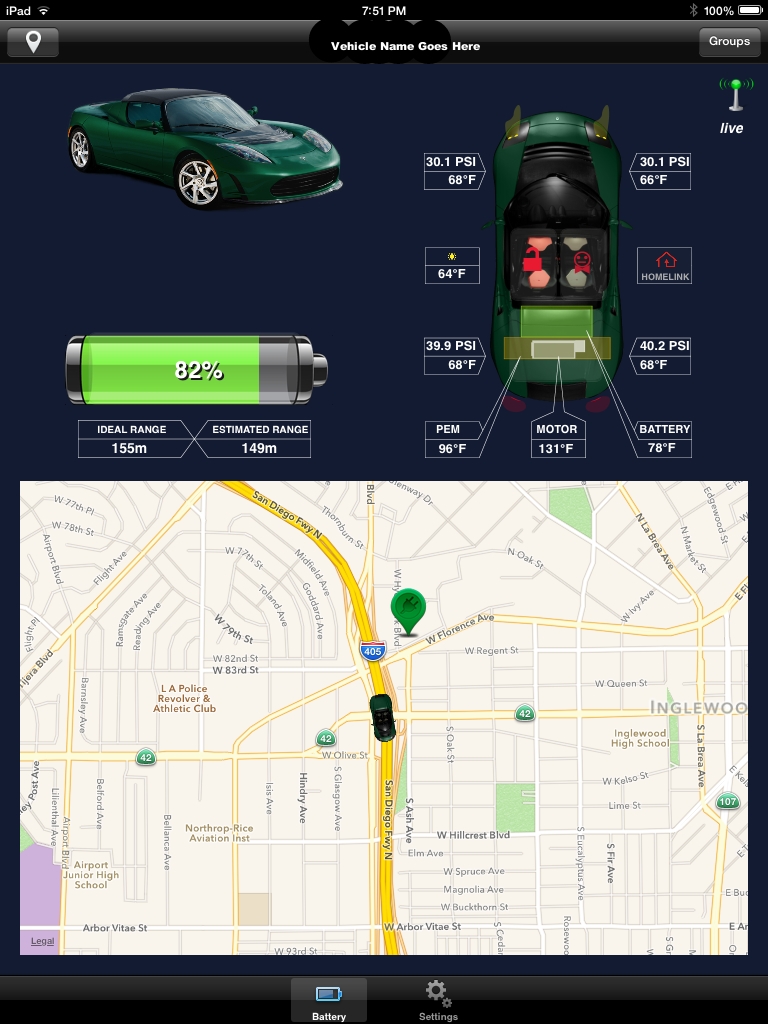
Showing progress on the better half’s drive on the way home…

Note that the car icon shows that her lights were on while she was driving in the evening (on the iPad version.)
OVMS also uses the feedback available on the connection to the vehicle to alert the user via text message or the app when the car stops charging unexpectedly. This is useful when one needs to ensure that one gets a full charge. The BMW My Remote does not do this and I often rely on Chargepoint or Blink’s networked EVSE to provide this intelligence rather than the vehicle’s feedback.
The support on teslamotorsclub.com by markwj is top notch. He single-handedly beats out BMW on the Telematics support. As I mentioned between October 23-29th the App was inoperative without a peep to the user community and Mark replies within several hours (the guy is in Hong Kong, so please be cognizant of when he “should” be sleeping.) Recently, we had a connectivity issue that was reported [starting with my post here and resolved in subsequent posts] on teslamotorsclub.com and the user community was able to give feedback to each other to ascertain that the problem was NOT to our individual instance, but something “in the cloud.”
Top notch product and service. Yay user community!
We still have not taken delivery of the Model S, so I’ll have to update on that when we do (coming soon…)


Third, CarWings and Nissan Leaf.
1) Support for Multiple Mobile devices as well as the Web.
Carwings is deployed on iOS, Android, AND Blackberry. It’s kind of cool in that. However, the command structure seems to employ either SMS or a query/response system between the user App, a server, and finally the vehicle.
2) Near real-time status updates of the vehicle and its current state.

As a result of this query system, one must be cognizant of the Updated field in the middle of the application to see when the status was polled from the vehicle.
If you do not set the Application for auto-poll at start up, you need to initiate one.


Then wait for the response to get the update.

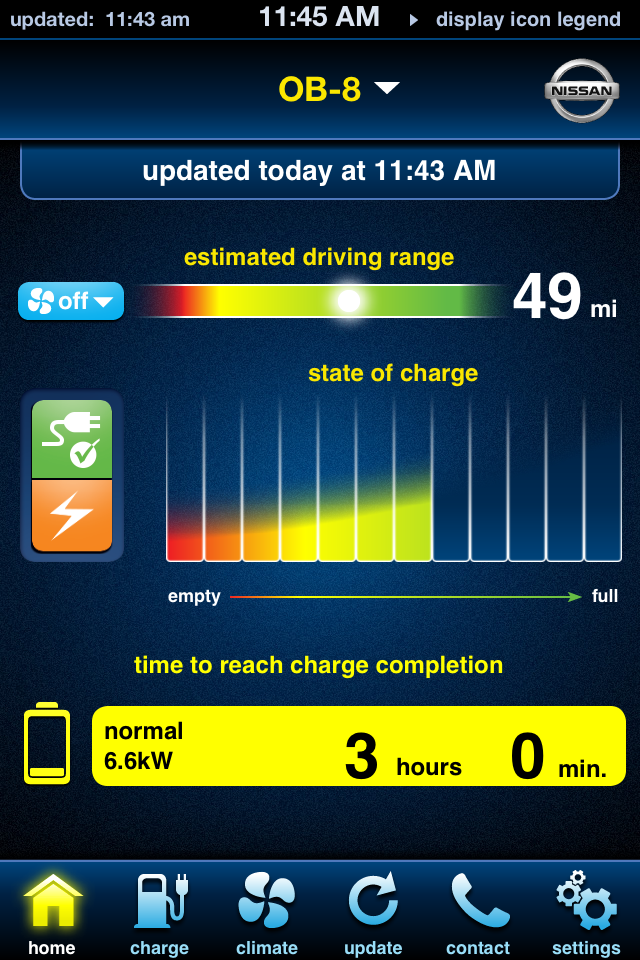
A) Battery Charge Level
B) Charging/Not Charging (Plugged/Not Plugged)
C) Estimate of how long charging will take
Aside from the pause, stop, start, nature of a manually requested polling system, the Leaf and Carwings knock A – C out of the park. It gives a status on what speed the vehicle is charging at, an estimate of how long it will take to charge over differing conditions, it lets you know easily whether the car is plugged in or not, whether it is charging, or not, etc.
3) At least several years of access to the systems should be included with the price of the car.
At time of lease (this is my mom’s vehicle that we’re reviewing.) CarWings was included for three years. Nissan has announced that European ones will be free past their initial period, I have not really paid attention to the US Nissan program, so I really shouldn’t comment on that.
I really enjoy the configurations for Carwings to NOTIFY the user via email and text messaging of the charge status whether the charge was interrupted or not. Additionally, the user can configure the vehicle to recognize (via GPS) when the vehicle is near a preferred parking location that it should plug in at. For example, since my mother is >60 years old, we have it set to notify her (and me) when she’s home and forgot to plug in.
This particular feature combined with the stopped charging notifications that we set up on the car enabled me to remotely diagnose when my mother’s 2013 Nissan Leaf started to exhibit the 6.6kw charger problems that was reported with earlier batches of the vehicle. This then enabled her to take the time to get the vehicle back to Nissan for service.
My mother loves the ability to remotely engage the cooling (warming) features of CarWings so that she can initiate cabin control when she is a few minutes away from her vehicle.

Telematics is an important part of the EV experience. It is this feedback experience that enables EV drivers to be more “in tune” with their vehicles than their ICE counterparts and allow EV drivers with a superior experience on the road.
[added 2013-11-07 In the interest of covering other EVs, here are links to Jamie Mueller’s Ford Focus EV blog for what Ford allows its EV drivers to do:
It’s refreshing to see such capabilities demonstrated on so many vehicles.]



